Eli Discovers the Echo Chamber:
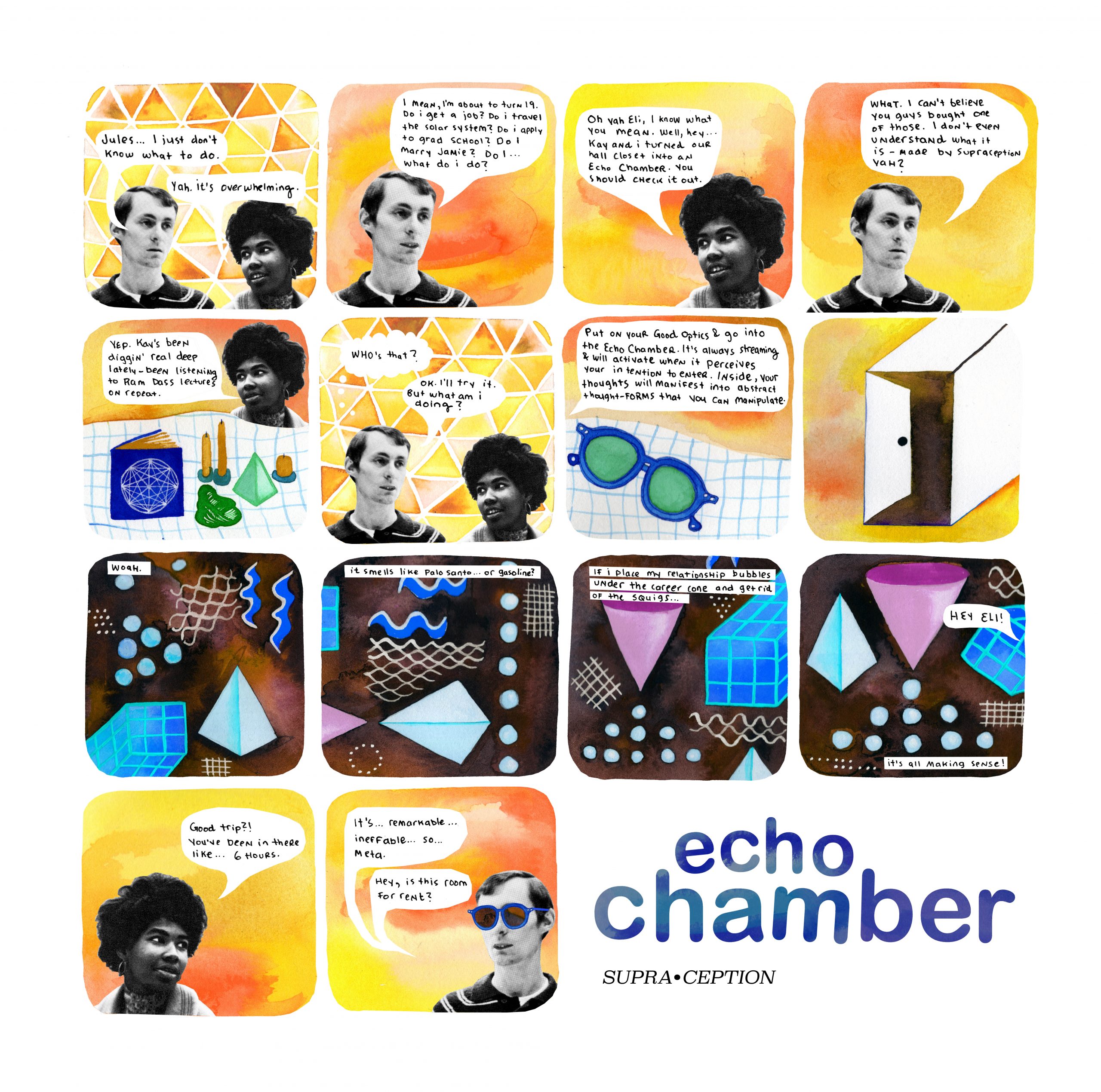
Kay Deals with a Broken Pair of Good Optics:
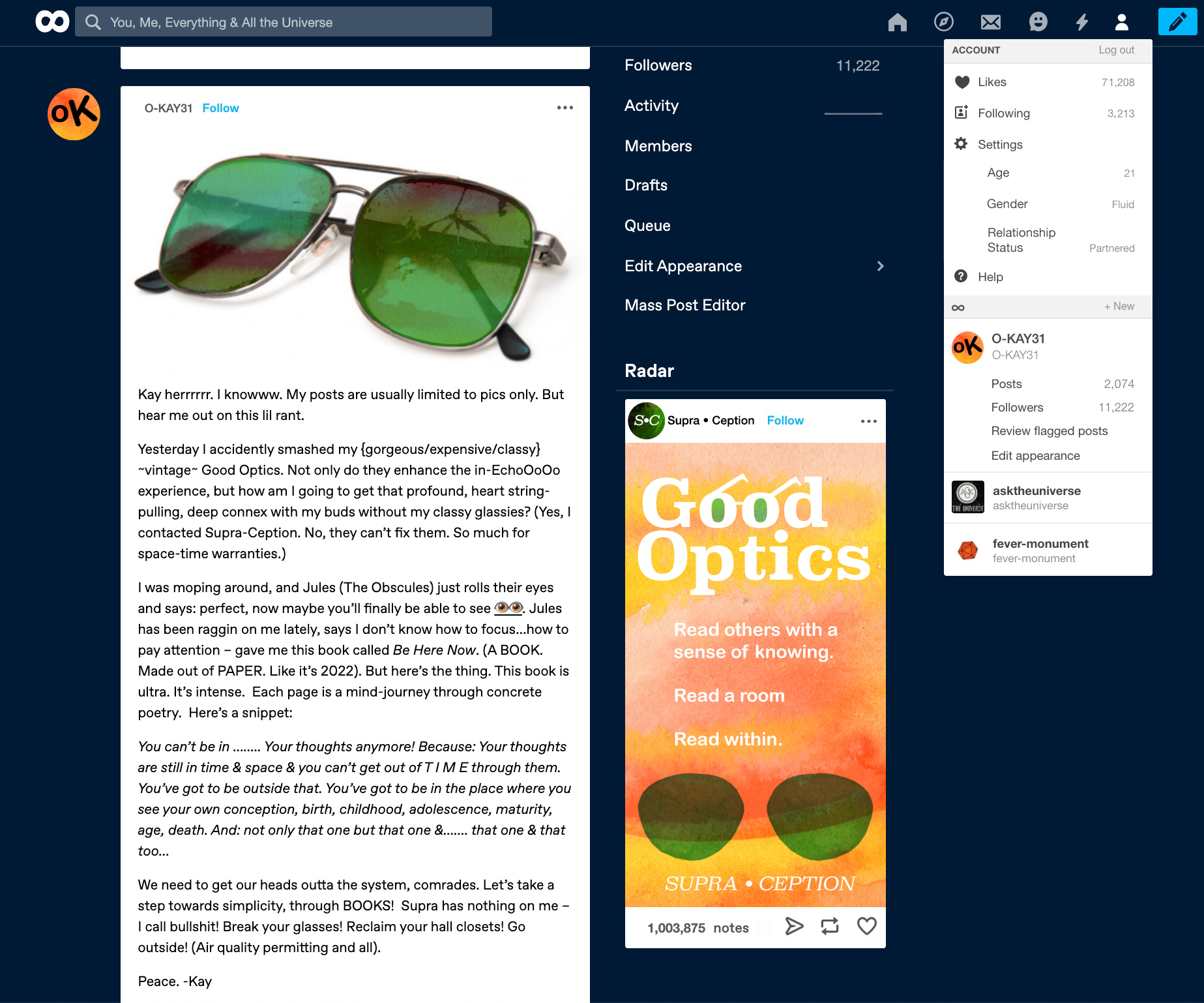
It was almost impossible to sift through the reading/viewing/listening materials to find the perfect nuggets to turn into this week’s narrative tasks. Impossible because the content, particularly Dunne and Raby’s (2013) book, Speculative Everything was so packed with insightful and exciting ideas about the world, our future and the potential of speculative design. Also, at least for me, spending a weekend developing two narratives isn’t enough time! I barely began to relay all the ideas floating around in my mind.
Besides name-dropping many of my favourite artists/designers/concepts (Haus Rucker, Archizoom, Etorre Sotsass, Sol LeWitt, Adrian Piper, conceptualism, Instruction-based Art, etc.) Dunne and Raby also provide a comprehensive answer to a question I am always asking: Why did all the coolest, revolutionary institutions, philosophies, movements and manifestos happen before I was born? Why aren’t they happening (at least at the same scale) now? Their (highly summarized) answer being:
“Hyper-commercialization” (p. 6) that came about in the 1980s; the shattering of hope that there could be “other social or political possibilities beyond capitalism” (p. 8) marked by “the fall of the Berlin Wall in 1989;” the rise of society of individuals” fed by rampant capitalism; and, “the downgrading of dreams to hopes once it became clear that the dreams of the twentieth century were unsustainable.”
UGH. How depressing.
Yet Dunne and Raby didn’t write a book to simply outline the sad mistakes that have led humankind to where we are today, their intention is to provoke the reader to change the way they think and act in the world using speculative design as a catalyst. They write that in order to face today’s challenges, we need to change our “values, beliefs, attitudes and behavior,” and that rather than “channeling energy and resources into fiddling with the world out there,” we should shift the “ideas and attitudes inside our heads that shape the world out there” (p. 2).
Throughout the reading I thought of all kinds of speculative design ideas (biological mesh created from an individual’s own bio-matter to be used in surgeries and eliminate the complications that currently arise from surgical mesh; a computer that scans your body, and that allows you to order perfectly fitting, fully customizable clothing, leading consumers away from fast fashion). Yet both of these concepts were a little too practical, or perhaps even have already been invented.
I settled on joint narratives set in the ~2040s that explore two speculative designs that fall into the categories of wellness and communication, both are created by a made-up company called “Supra-Ception”. The first is called the Echo Chamber, a device that can be installed in a small room, creating an environment where an individual’s thoughts are transformed into physical, abstract geometric shapes that can be manipulated by hand. The idea being that if thoughts and emotions took on a physical form outside of oneself, one could form a deeper and clearer understanding of their self. A second product, Good Optics, is a pair of glasses that are constantly analyzing what’s in the wearer’s sightline (a friend’s micro expression, the dynamics between a group of people, unassuming danger) to help the wearer make informed and ethical choices in their life based on real objective data rather than one’s own assumptions.
Although the designs are seemingly idealistic and altruistic in nature, it’s not a stretch to imagine how the use of the products could go awry. Using the comic format, I explore how the Echo Chamber could become an addictive method of escapism for the young and impressionable Eli, who is searching for answers in life. (Not to mention, cause a narrowing and diminished life perspective). A related narrative is addressed with Eli’s friend, Kay, utilizing the format of a social media post (a futuristic version of Tumblr). For this narrative I wanted the choice of media to look believable, thinking of what Dunne and Raby had written, “the viewer should experience a dilemma: is it serious or not? Real or not” (p. 40)? In her post, Kay is fed up with Supra-Ception products, and is discovering analogue spiritual content from the past, particularly, Ram Dass’ 1971 book of concrete poetry, Be Here Now. My intention for having Kay’s inspiration be Ram Dass was to reference Dunne and Raby’s reasoning for why “radical…imaginative, social and political,” design/content/movements are “more difficult and less likely” (p. 6) today, with the sad assertion that even in the 2040s, young people are still looking to the 60s and 70s for revolutionary inspiration.
Reference List:
Dass, R. (1971). Be here now, be here now, be here now, here be now, be nowhere now: Remember. San Cristobal, NM: Lama Foundation.
Dunne, A. & Raby, F. (2013). Speculative Everything: Design, Fiction, and Social Dreaming. Cambridge: The MIT Press. Retrieved August 30, 2019, from Project MUSE database.
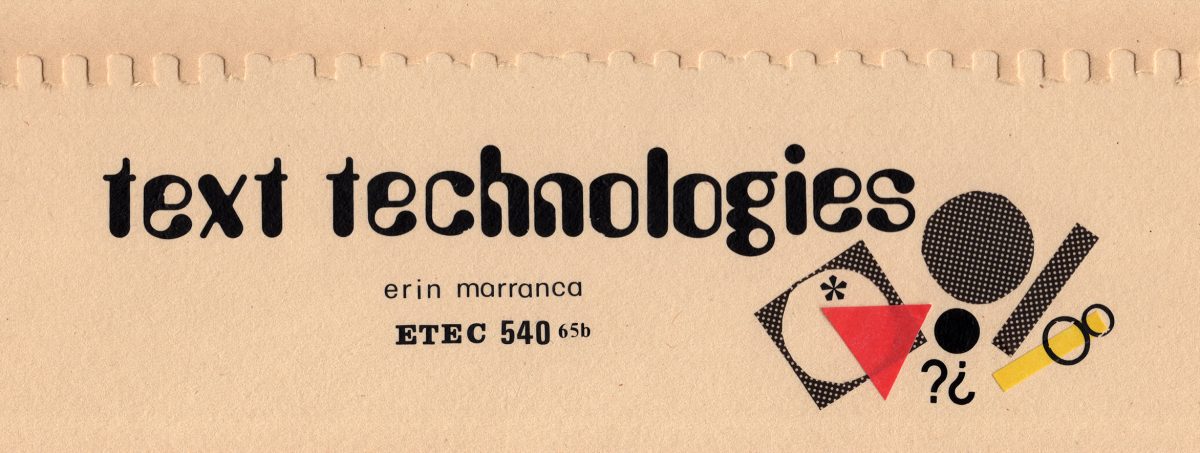
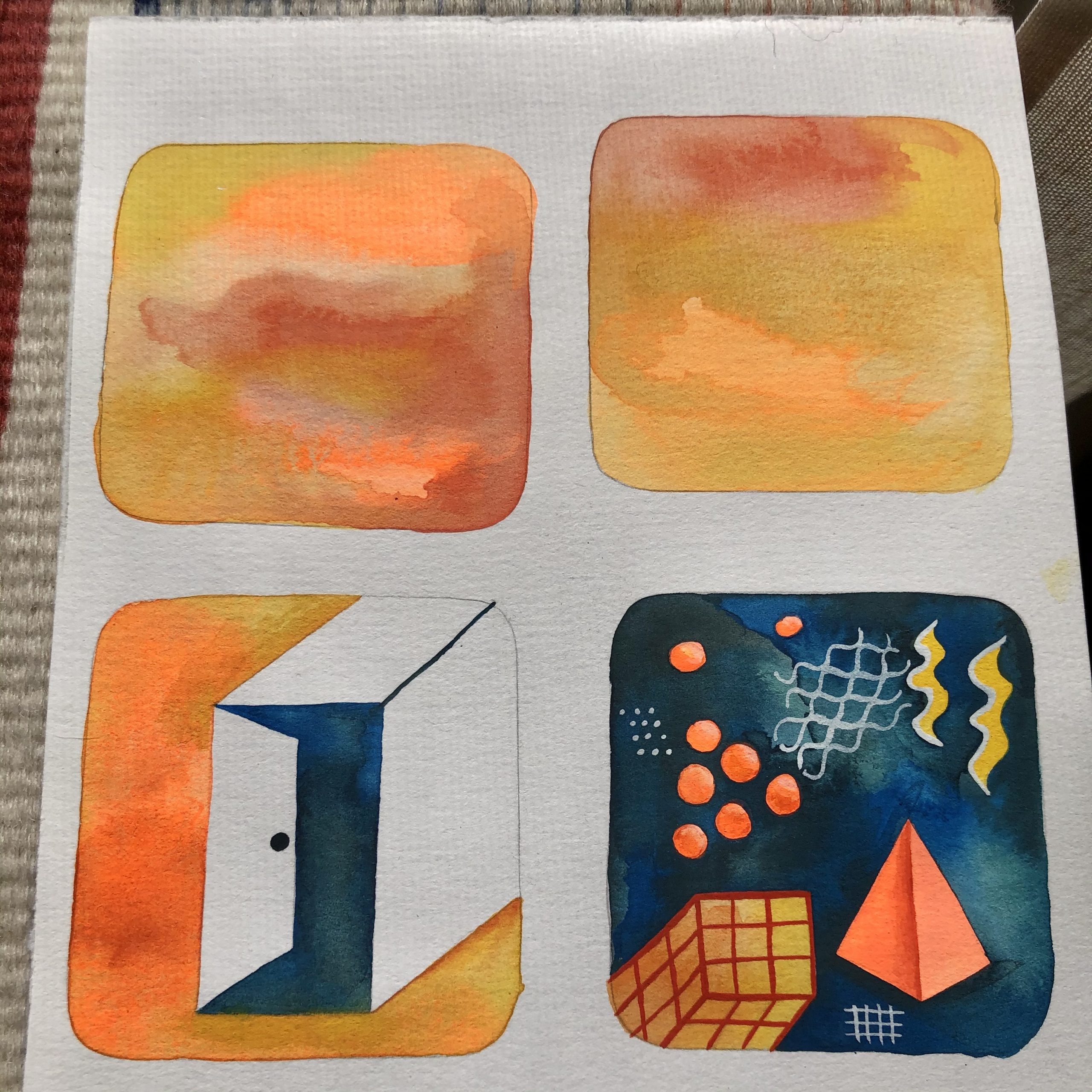


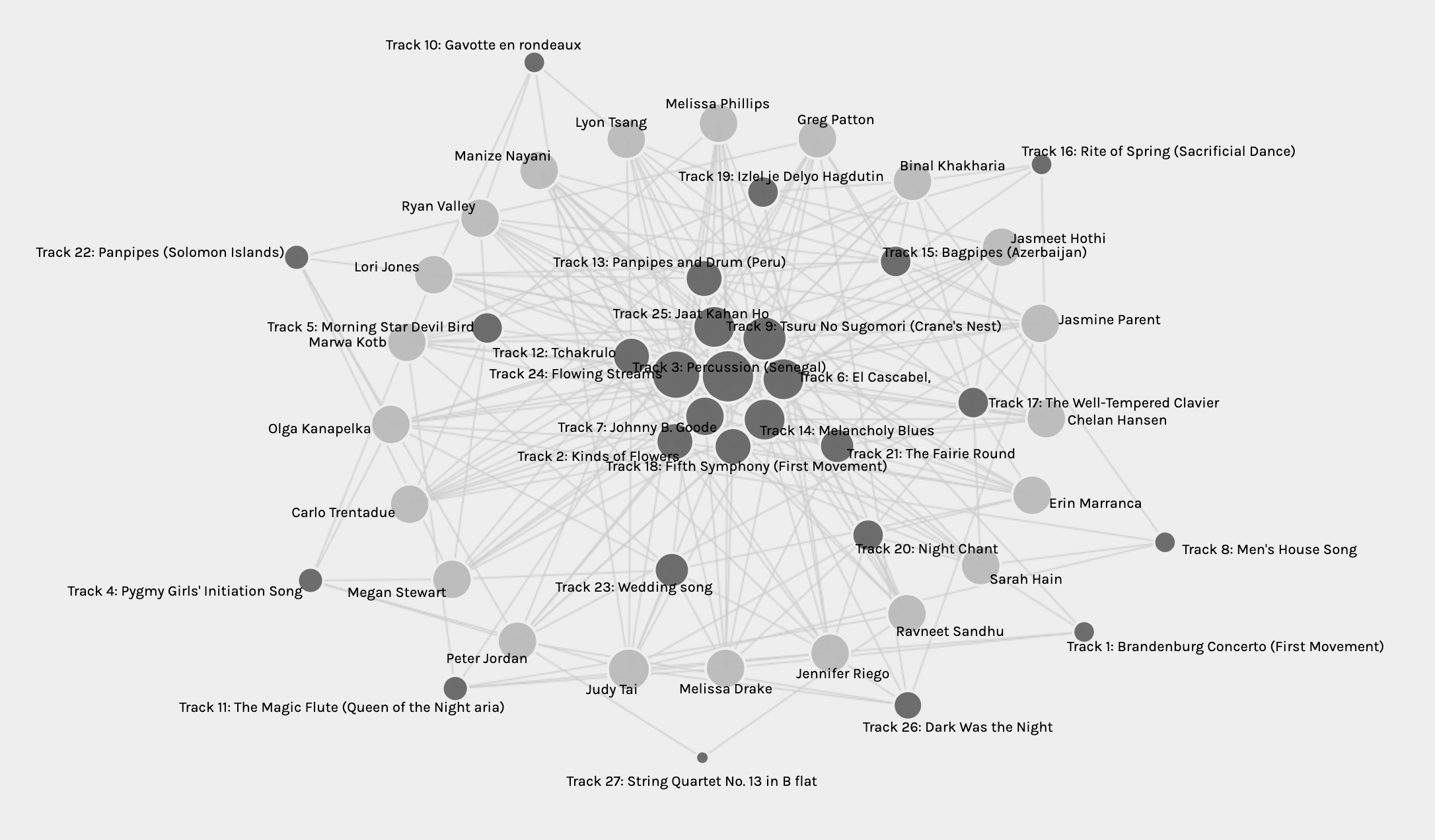
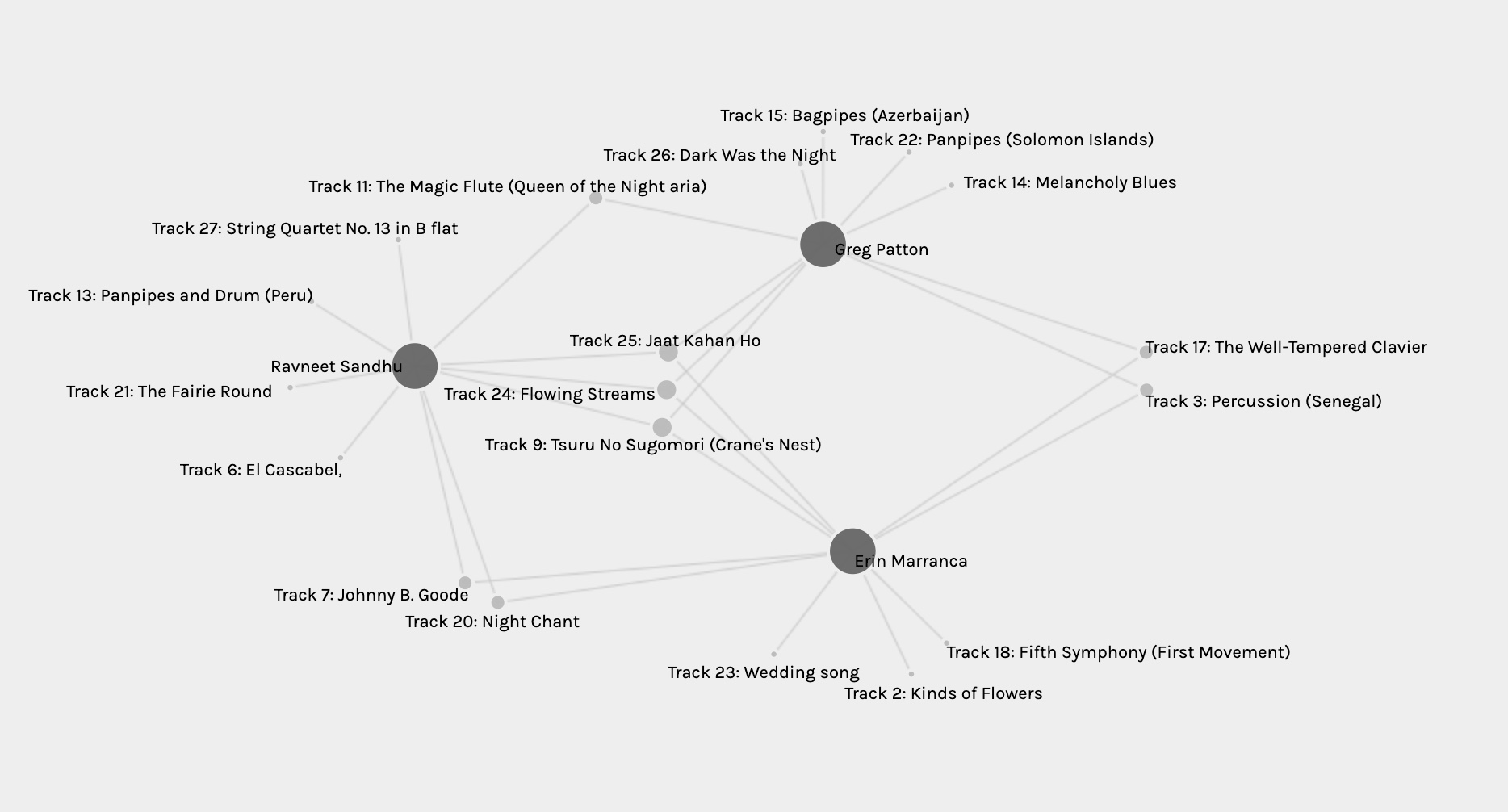
 Click on image to link to actual Google Map
Click on image to link to actual Google Map